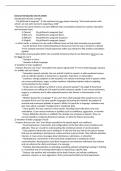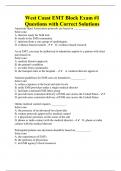College aantekeningen
College aantekeningen/notes Voice & Body Language (822205-B-6)
- Instelling
- Tilburg University (UVT)
In dit document vind je uitgebreide samenvattingen van ELK college. Alle stof die in de colleges behandeld worden + extra uitleg kun je vinden in dit document. (de aantekeningen zijn in het Engels) In this document you will find summaries of EACH lecture. All material covered in the lectures + a...
[Meer zien]













